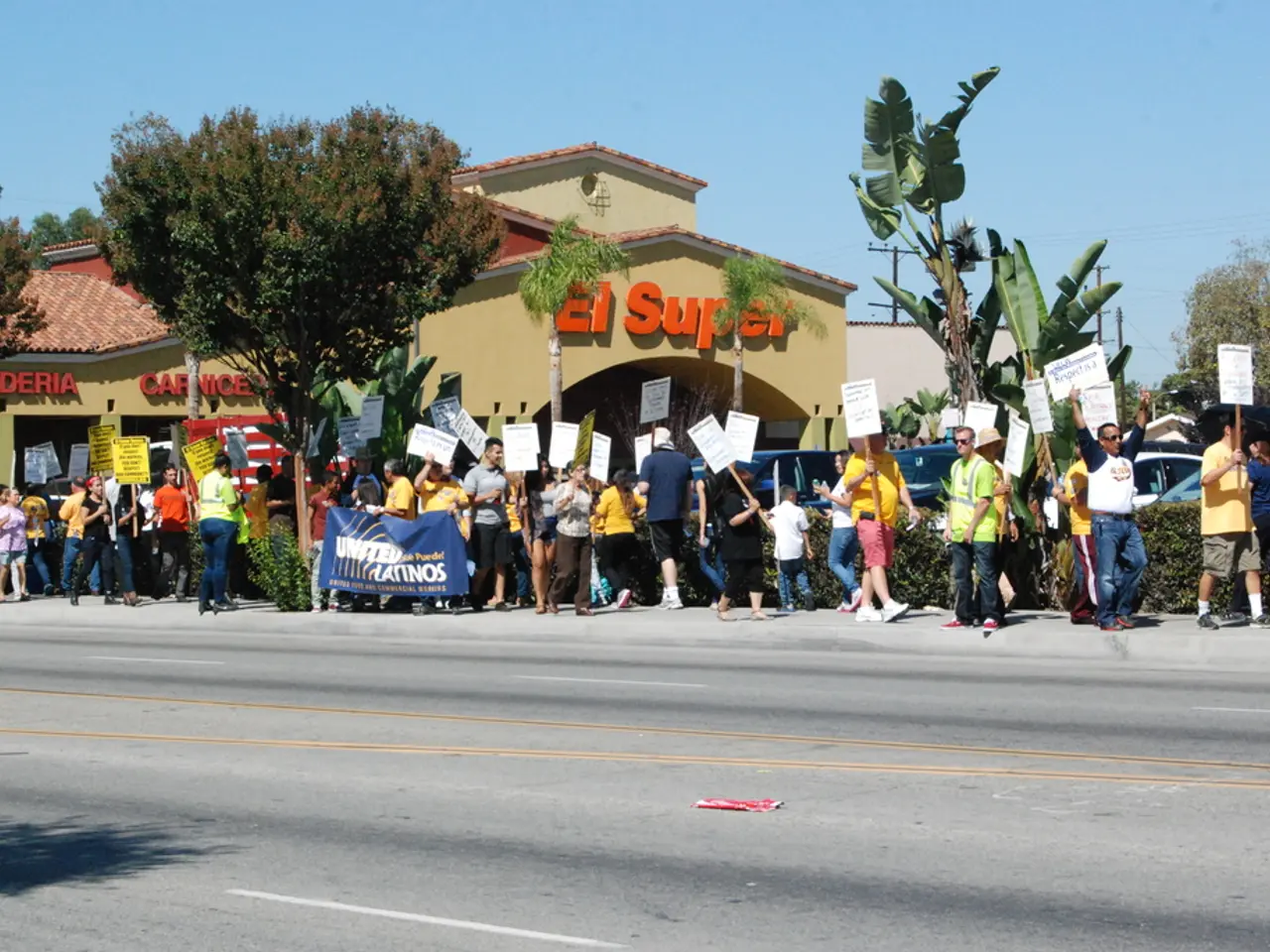Forecasting Election Participation and Preference through Artificial Intelligence and Data Analysis Techniques
In the modern political landscape, Artificial Intelligence (AI) and Machine Learning (ML) are transforming election campaigns, offering unparalleled insights into voter behavior and turnout.
These advanced technologies, collectively known as Machine Learning Magic, are revolutionizing the way campaigns are run. By combining AI with extensive data analysis, they provide a deeper understanding of voter preferences and tendencies.
One of the key areas where AI is making a significant impact is in voter turnout predictions. Accurate predictions are crucial for election campaigns, as they enable politicians to tailor their messaging and direct resources to essential demographics.
Machine Learning Magic analyses digital interactions, such as social media activity, online browsing behavior, and voter registration records, to identify patterns and signals that reveal voter behavior. This analysis helps campaigns target outreach efforts to mobilize low-turnout precincts and persuadable voters.
AI predictions can also help identify patterns and trends in voting behavior that were previously unknown, bringing a new level of insight to political campaigns. For instance, AI algorithms can predict voter turnout by using algorithms that compile and analyse vast amounts of data, including weather patterns and social media activity.
Moreover, AI-powered tools can help campaign teams and political parties organise data sets and streamline communication channels for efficient resource utilisation. Predictive analytics can tailor messaging to specific voter segments based on previous engagement patterns and sentiment.
The use of AI and Machine Learning in predicting voter behavior and turnout has widespread implications beyond election campaigns. These technologies are being employed in various sectors, including business operations, healthcare research, and public policy.
However, ethical considerations in the use of AI for election campaigns are paramount. Handling data responsibly, respecting privacy, and avoiding unwarranted targeting or manipulation are essential to maintain trust and ensure fair elections.
In conclusion, the integration of AI and ML in election campaigns significantly enhances the prediction of voter behavior and turnout by enabling highly accurate, real-time analysis of vast and varied data sources. These technologies provide a data-driven approach to election campaigning, enabling precise, adaptive, and personalised voter engagement strategies, leading to more effective prediction of voter behavior and turnout and more strategic election efforts overall.
Politicians are leveraging the insights offered by Machine Learning Magic, a combination of Artificial Intelligence and data analytics, to better understand voter preferences and tendencies. This technology is utilizing data-and-cloud-computing capabilities to analyze various forms of data, such as social media activity, online behaviors, and voter registration records, to predict voter turnout.
Accurate predictions allow political campaigns to focus resources on influencing essential demographics and mobilizing low-turnout precincts. AI algorithms can also identify trends and patterns in voting behavior, providing new levels of insight that were previously unknown.
The integration of AI in politics extends beyond just election campaigns. These advanced technologies are being used in various sectors, including business operations, healthcare research, and public policy.
While the benefits of AI are numerous, ethical considerations must be addressed. Handling data responsibly, respecting privacy, and avoiding unwarranted targeting or manipulation are crucial to maintain trust and ensure fair elections.
In conclusion, the application of AI and ML in politics permits more effective prediction of voter behavior and turnout by offering a data-driven approach to election campaigning. This leads to more strategic election efforts that are adaptable, personalized, and precise, reaching voters effectively based on their engagement patterns and sentiment.
Campaign strategies have been transformed as a result, with the use of data analytics, predictive analytics, and AI-powered tools streamlining communication and resource management for more targeted and efficient efforts.




